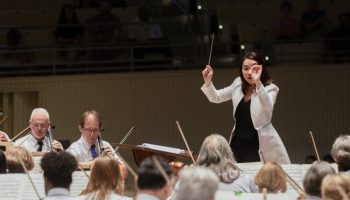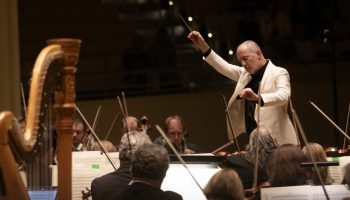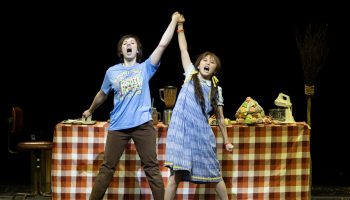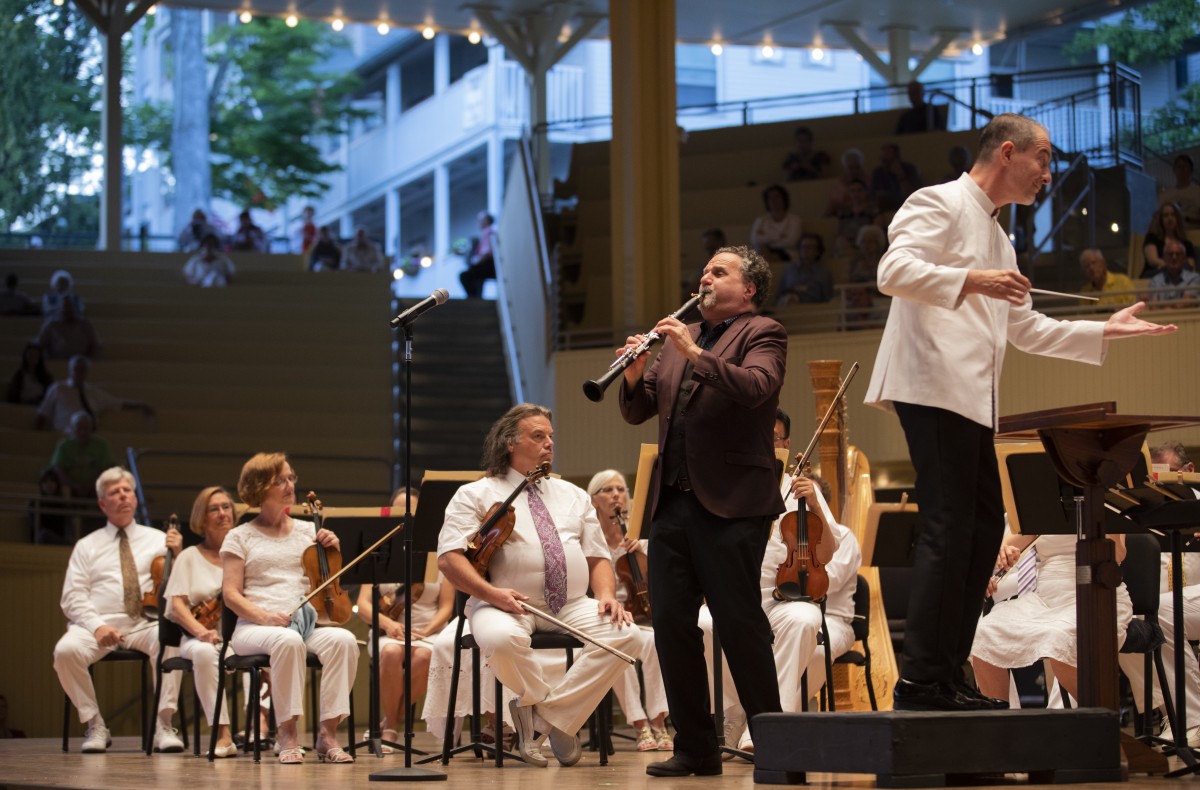
For tonight’s concert, percussionist Adam Sliwinski needs 40 twigs, bone-dry, preferably of similar length and thickness. He will have to break all of them multiple times — and he’s been practicing.
“The thing about twigs is that they’re organic material with little joints and different thicknesses, and (composer David Lang) asks us to break them in very precise rhythms,” Sliwinski said. “But every twig doesn’t break with exactly the same amount of pressure in exactly the right place that you want it to, so you have to develop a feel for how thick the twig is in your hand and how quickly it’s going to snap.”
At 8:15 p.m. Tuesday, July 31, in the Amphitheater, Sliwinski and the other three quarters of Sō Percussion will perform Lang’s “man made,” a concerto for percussion quartet and orchestra. The Chautauqua Symphony Orchestra will also perform Edward Elgar’s Variations on an Original Theme, op. 36, “Enigma.”
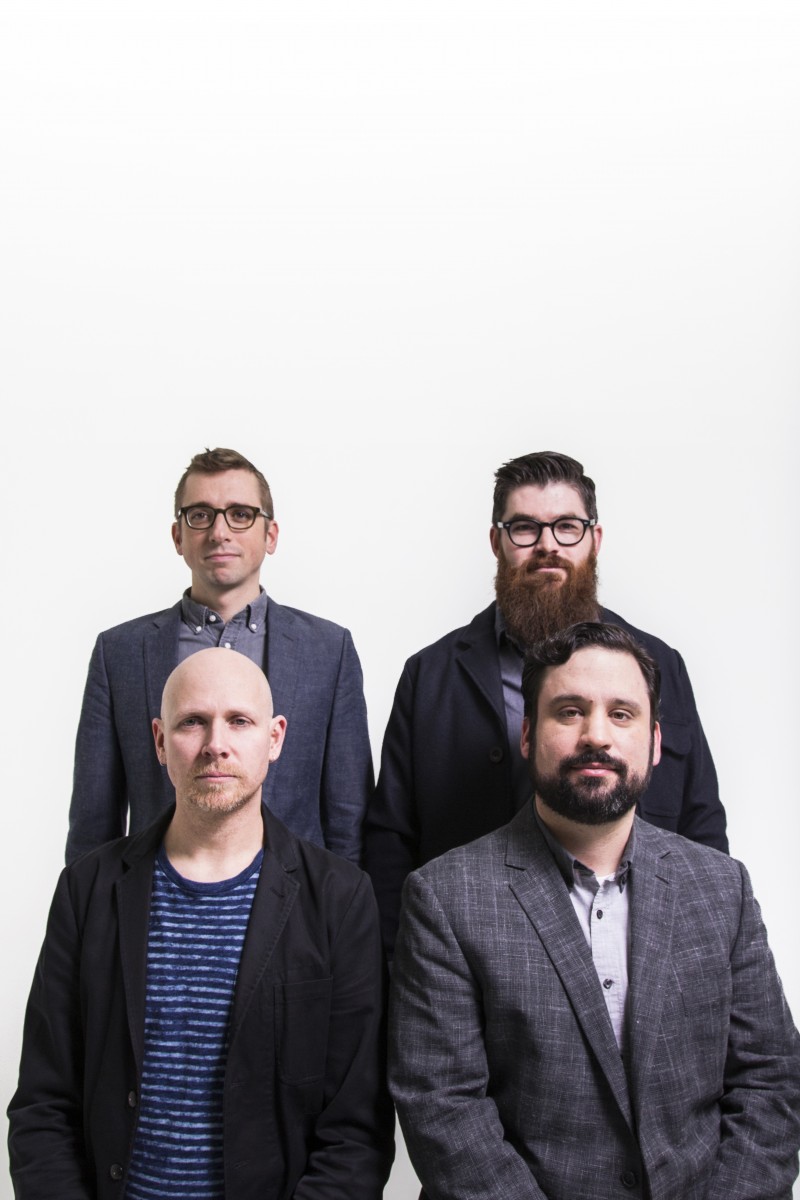
The concert is part of this season’s “Into the Music” series; there will be a discussion of the music throughout the program and no intermission.
For the last 19 years, Sō Percussion has been rattling, beating and scraping its way to prominence in the classical music world, and it’s working: the group has been featured on 21 albums, performed in hallowed venues like Disney Hall or the Kennedy Center, and is now the Edward T. Cone Ensemble-in-Residence at Princeton University — the latter achievement being the most recent, and still a little hard to believe for Sliwinski.
“When I was a student 20 years ago, it was unimaginable that the position a string quartet normally takes up would now be a percussion quartet,” he said. “So we’re delighted that we’ve been a part of things diversifying.”
For most of the history of European classical music, according to Sliwinski, composers have generally used percussion as decoration for orchestral music.
Many cultures around the world, however, have percussion at the center of their musical tradition. Since its inception, Sō Percussion has been asking if that can be true in Western culture as well, Sliwinski said.
That interrogation is a part of a percussion tradition that’s about 80 years old — composer Edgar Varèse wrote the first standalone, all-percussion work in 1931, and percussion ensembles began popping up in the following decades — but that’s a young tradition compared to that of other Western instruments, like the violin.
Starting in the ’30s and ’40s, Sliwinski said, composers like John Cage began experimenting with percussion as the center of attention. They also began employing a broader range of instruments than the standard orchestral items, a trend that has continued to the modern day.
Now, Sliwinski said, percussionists can be called upon to do almost anything, so they must be adept at learning new instruments; in addition to snapping twigs, Sō will be performing on wine bottles, metal pipes, trash cans, and traditional percussion instruments.
Lang’s “man made” will martial the skills of all percussionists involved in tonight’s performance, including the CSO percussion section.
“My solution was to set up a kind of ecology between the soloists and the orchestra, using the orchestral percussionists as translators,” Lang said in a 2014 YouTube video. “An idea begins with the soloists on an invented instrument, the percussionists in the orchestra hear the solo music and translate it into something that can be approximated by more traditional orchestral percussion, the rest of the orchestra hears and understands the orchestral percussion, and they join in.”
After the percussion concerto, the CSO will perform Elgar’s Variations on an Original Theme, op. 36, “Enigma.” Each of the 14 variations is a musical depiction of one of Elgar’s friends — one of them is even devoted to a dog that Elgar was close with.
The subtitle “Enigma” implies some kind of puzzle nested in the piece, and while Elgar himself never explicitly said what that puzzle was, he did leave hints. CSO Music Director Rossen Milanov, along with Elgar’s biographer and most musicologists, said that the piece’s theme — heard in the opening few bars — is the counter-melody to a different, more well-known theme.
Musicologists have taken many a guess at what that theme — the solution to the enigma — might be. Guesses range from “Auld Lang Syne” to “A Mighty Fortress is Our God,” but no consensus has been reached.
For Milanov, though, neither the characters behind the variations nor the solution to the enigma are as important as the musical content of the piece.
“My approach would be to just enjoy this incredible piece of music and find inspiration in the music itself,” Milanov said.


